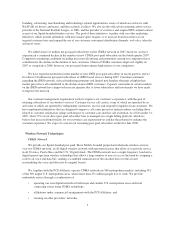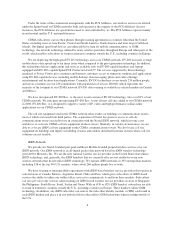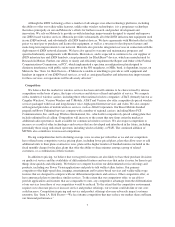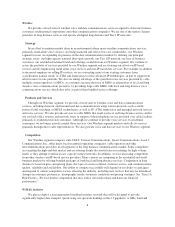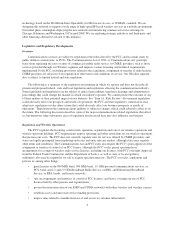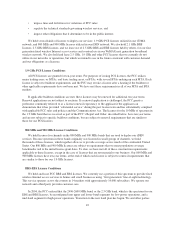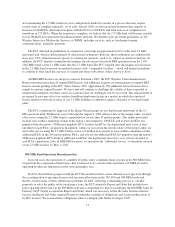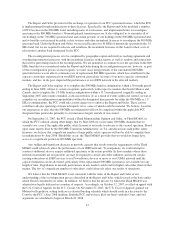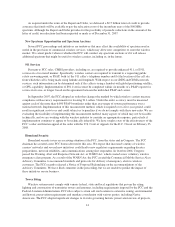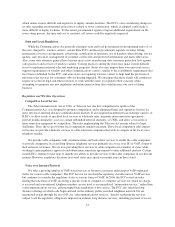Sprint - Nextel 2007 Annual Report Download - page 17
Download and view the complete annual report
Please find page 17 of the 2007 Sprint - Nextel annual report below. You can navigate through the pages in the report by either clicking on the pages listed below, or by using the keyword search tool below to find specific information within the annual report.which makes it more difficult and expensive to deploy antenna facilities. The FCC is also considering changes to
its rules regarding environmental protection as related to tower construction, which, if adopted, could make it
more difficult to deploy facilities. To the extent governmental agencies impose additional requirements on the
tower siting process, the time and cost to construct cell towers could be negatively impacted.
State and Local Regulation
While the Communications Act generally preempts state and local governments from regulating entry of, or
the rates charged by, wireless carriers, certain State PUCs and local governments regulate customer billing,
termination of service arrangements, advertising, certification of operation, use of handsets when driving, service
quality, sales practices, management of customer call records and protected information and many other areas.
Also, some state attorneys general have become more active in enforcing state consumer protection laws against
sales practices and services of wireless carriers. Varying practices among the states may make it more difficult
for us to implement national sales and marketing programs. States also may impose their own universal service
support requirements on wireless and other communications carriers, similar to the contribution requirements that
have been established by the FCC, and some states are requiring wireless carriers to help fund the provision of
intrastate relay services for consumers who are hearing impaired. We anticipate that these trends will continue to
require us to devote legal and other resources to work with the states to respond to their concerns while
attempting to minimize any new regulation and enforcement actions that could increase our costs of doing
business.
Regulation and Wireline Operations
Competitive Local Service
The Telecommunications Act of 1996, or Telecom Act, the first comprehensive update of the
Communications Act, was designed to promote competition, and it eliminated legal and regulatory barriers for
entry into local and long distance communications markets. It also required incumbent local exchange carriers, or
ILECs, to allow resale of specified local services at wholesale rates, negotiate interconnection agreements,
provide nondiscriminatory access to certain unbundled network elements, or UNEs, and allow co-location of
interconnection equipment by competitors. The rules implementing the Telecom Act remain subject to legal
challenges. Thus, the scope of future local competition remains uncertain. These local competition rules impact
us because we provide wholesale services to cable television companies that wish to compete in the local voice
telephony market.
We provide cable companies with communications and back-office services to enable the cable companies
to provide competitive local and long distance telephone services primarily in a voice over IP, or VoIP, format to
their end-user customers. We are now providing these services to cable companies in a number of states while
working to gain regulatory approvals and obtain interconnection agreements to enter additional markets. Certain
rural ILECs continue to take steps to impede our ability to provide services to the cable companies in an efficient
manner. However, regulatory decisions in several states may speed our market entry in those states.
Voice over Internet Protocol
We offer a growing number of VoIP-based services to business customers and transport VoIP-originated
traffic for various cable companies. The FCC has not yet resolved the regulatory classification of VoIP services,
but continues to consider the regulatory status of various forms of VoIP. In 2004, the FCC issued an order
finding that one form of VoIP, involving a specific form of computer-to-computer services for which no charge
is assessed and conventional telephone numbers are not used, is an unregulated “information service,” rather than
a telecommunications service, and preempted state regulation of this service. The FCC also ruled that long
distance offerings in which calls begin and end on the ordinary public switched telephone network, but are
transmitted in part through the use of IP, are “telecommunications services,” thereby rendering the services
subject to all the regulatory obligations imposed on ordinary long distance services, including payment of access
15


